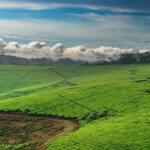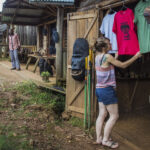
Traveling to a new destination for the first time can be both exciting and a bit daunting. Uganda, known as the Pearl of Africa, offers a unique blend of breathtaking landscapes, diverse wildlife, and rich cultural experiences that make it a must-visit destination. Before you embark on your adventure to this vibrant East African country, it’s essential to be well-prepared. From understanding the tropical climate and the best times to visit to knowing the local languages and currency, this guide provides all the key information you need for a smooth and enjoyable trip to Uganda. Whether you’re planning to go on a gorilla trek, explore national parks, or immerse yourself in the local culture, these tips will ensure you make the most of your Ugandan experience.
1. Wildlife in Uganda
Uganda, often referred to as the Pearl of Africa, offers an unparalleled wildlife experience that serves as a compelling reason to visit. The country is home to half of the world’s remaining mountain gorillas, and gorilla trekking in Bwindi Impenetrable National Park and Mgahinga Gorilla National Park is a once-in-a-lifetime adventure. The rich diversity of wildlife extends beyond gorillas; Murchison Falls National Park is home to 4 of the Big Five: lions, elephants, buffalos, and leopards, the rhino is the only member of the Big 5 animals that is missing the park, but still, you can watch Rhinos in Uganda by Visiting Ziwa Rhino Sanctuary. Additionally, Queen Elizabeth National Park is a haven for bird watchers, with over 600 bird species. Uganda’s landscapes, from savannas to lush forests, provide a stunning backdrop for these wildlife encounters, making it a must-visit destination for nature and wildlife enthusiasts.
2. Uganda’s Climate
Uganda’s tropical climate, with its distinct wet and dry seasons, makes it a popular tourist destination. The two dry seasons, June to August and December to February, offer ideal conditions for wildlife viewing and gorilla trekking. The temperate climate supports diverse ecosystems, attracting nature lovers, birdwatchers, and adventure seekers. Uganda’s predictable weather patterns contribute to its growing popularity as one of the top travel destinations in the region.
3. Best time to visit Uganda
The best time to visit Uganda is during its two dry seasons: from June to August and December to February. During these months, the weather is pleasant, and the roads are more accessible, making it ideal for safaris and wildlife viewing. The dry conditions are perfect for gorilla trekking in Bwindi Impenetrable Forest and Mgahinga Gorilla National Park, as trails are less muddy and easier to navigate. Additionally, birdwatching enthusiasts will find these months particularly rewarding, with many species being more active. Overall, the dry seasons offer the best experience for tourists looking to explore Uganda’s diverse landscapes and abundant wildlife.
4. Language
Uganda is a linguistically diverse country with over 40 languages spoken. English is the official language and is the most used in education, administration, and business. Swahili is another official language, promoting regional integration. Luganda, spoken by the Baganda people in the central part of the country, is the common language used in the country. Other significant languages include Runyankole, Ateso, and Lugbara, reflecting the country’s rich cultural diversity.
5. Uganda Currency

Uganda Money
The Uganda Shilling is the currency of Uganda. It is abbreviated as UGX. It is issued by the Bank of Uganda and has been the official currency since 1987. The shilling was previously subdivided into cents, but due to significant inflation, it no longer has subdivisions. The Ugandan Shilling is widely used for all transactions within the country, and its exchange rate fluctuates against major currencies like the US Dollar. As of recent data, shilling remains an important part of Uganda’s economy, reflecting the country’s financial landscape and economic activities.
6. ATM’s in Uganda
ATMs in Uganda are almost everywhere, especially in urban areas like Kampala, Entebbe, and other large cities around the country. Major banks such as Stanbic Bank, Centenary Bank, DFCU Bank, Standard Chartered, and others have numerous ATMs that accept international cards, mostly Visa and MasterCard. However, in rural areas, ATMs are less common, so it’s advisable to carry enough cash when traveling outside cities. Be aware of potential withdrawal fees and daily limits, which can vary by bank. For safety, it’s best to use ATMs during daylight hours and in secure locations. Overall, with some planning, accessing cash in Uganda is manageable for travelers.
7. Buy a Local SIM Card
To stay connected while in Uganda, consider purchasing a local SIM card. Prepaid SIM cards in Uganda are affordable, offering around 5 GB for just 5$. From my personal experience, I recommend tourists choose either an Airtel or MTN Uganda SIM card. Additionally, if you’re arriving at Entebbe International Airport, several shops sell SIM cards there.
8. Wi-Fi in Uganda
Let’s be honest, Wi-Fi in Uganda can be unreliable. While most lodges offer free Wi-Fi in common areas, it often doesn’t work properly or is extremely slow. To ensure you stay connected, it’s best to buy a Ugandan prepaid SIM card upon arrival at Entebbe Airport. Don’t rely solely on Wi-Fi during your travels in Uganda.
9. Cars to hire in Uganda

Land Cruiser for Hire in Uganda
The easiest way to travel around Uganda is by hiring a 4×4 car and embarking on a self-drive safari. There are various car rental agencies in the country offering affordable services. Depending on your budget, you can choose a car that suits your needs and enjoy the freedom of exploring the country at your own pace. Some of the common cars available for hire in Uganda include:
- Toyota Rav 4
- Toyota Prado TX
- Nissan Safari
- Toyota Land Cruiser V8
- Land Rover Defender
- Land Cruiser Hardtop
10. Entry Requirements
To enter Uganda, travelers must have a passport valid for at least 6 months from the date of arrival. A visa is required and can be obtained online through the Uganda Electronic Visa/Permit Application System. The visa application process involves submitting the necessary documents, including a yellow fever vaccination certificate. Additionally, travelers must present a printed visa approval letter upon arrival. For those planning to visit multiple East African countries, an East African Tourist Visa is available, allowing multiple entries into Uganda, Kenya, and Rwanda for 90 days.


